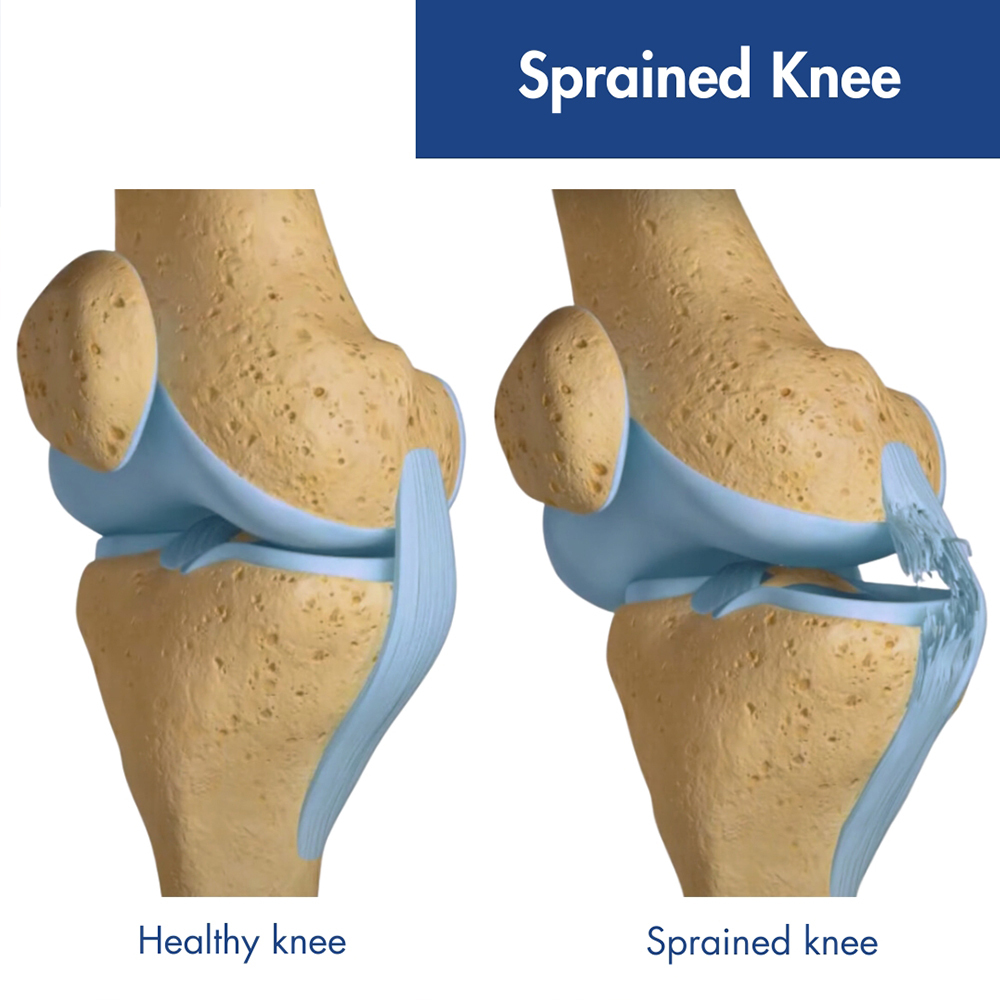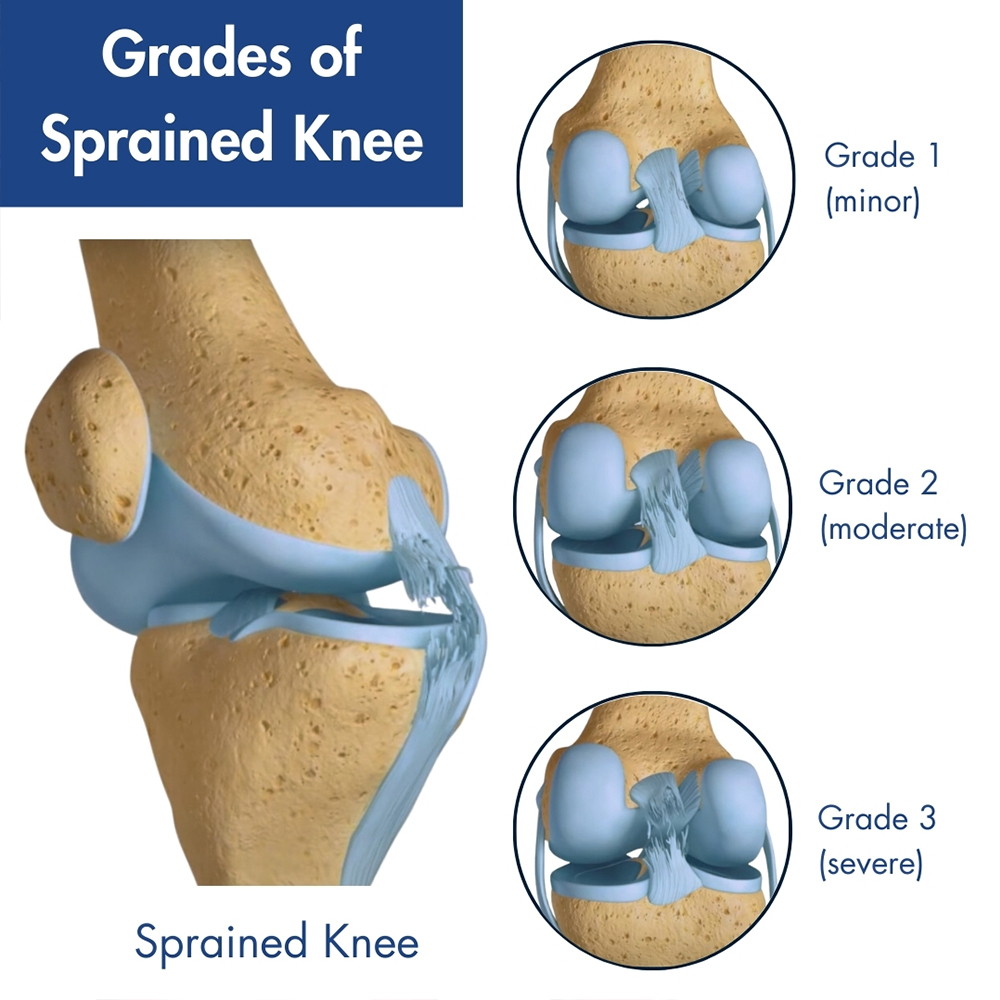We’re pleased to announce that Pain Physicians of Wisconsin is now Pro Spine Pain.
We’re pleased to announce that Pain Physicians of Wisconsin is now Pro Spine Pain.
 While a sprained knee may not initially seem severe, continuing with physical activity without addressing the injury can lead to significant complications, especially if ligaments are torn. Ignoring the injury may exacerbate the damage. Seek assistance from the joint specialists at Pro Spine & Pain in Wisconsin promptly. Consulting with a doctor can accurately diagnose a knee sprain and facilitate the necessary treatment for a speedy recovery.
While a sprained knee may not initially seem severe, continuing with physical activity without addressing the injury can lead to significant complications, especially if ligaments are torn. Ignoring the injury may exacerbate the damage. Seek assistance from the joint specialists at Pro Spine & Pain in Wisconsin promptly. Consulting with a doctor can accurately diagnose a knee sprain and facilitate the necessary treatment for a speedy recovery.
Despite the robustness of the knee joint, sprains can occur quite easily due to its intricate structure comprising ligaments, bones, cartilage, muscles, and tendons. A knee sprain results from the stretching or tearing of ligaments, potentially involving other knee components as well.
The knee relies on four ligaments for stability:
Contact sports are a common cause of knee sprains or other sports-related injuries, as are sudden impacts like those in car accidents. Sprains can also occur from twisting, overstretching, or lifting heavy objects. Even simple activities like stepping off a curb can sprain a weakened knee.
If you find it difficult to put weight on your leg due to knee pain, seek specialized care from Pro Spine & Pain’s expert joint specialists. They can pinpoint the precise problem for tailored treatment.
Ligaments are comprised of connective tissue that connects bones to each other.
In the case of ligament injuries, different actions cause sprains in each knee ligament:
When you injure your knee, symptoms often manifest immediately. However, beyond knee pain, there are common indicators, including swelling around the joint, increased pain when kneeling, possible instability or buckling sensations, tenderness, and difficulty moving the knee.
Symptoms vary depending on the specific ligament affected by common knee injuries. Knee sprains are categorized into three grades:
Understanding these symptoms and their severity helps in diagnosing and treating knee injuries effectively. If you’re experiencing any of these symptoms, seeking evaluation and treatment from a medical professional is crucial for proper management and recovery.
 While knee injury can occur at any age, certain activities elevate the risk. Casual activities like hiking and kickball even pose a risk. Competitive athletes face the greatest risk, with knee sprains being the most common injury in U.S. high schools.
While knee injury can occur at any age, certain activities elevate the risk. Casual activities like hiking and kickball even pose a risk. Competitive athletes face the greatest risk, with knee sprains being the most common injury in U.S. high schools.
More intense sports inherently carry greater risks. Basketball, football, soccer, rugby, wrestling, gymnastics, hockey, and skiing involve twisting and turning motions that make the knees vulnerable. Even playing sports like golf, yoga, running a 5K, or mountain biking can lead to knee injuries. Everyday tasks such as gardening, stair climbing, or playing with children can also result in knee sprains.
Regardless of the activity, understanding the risk factors and taking precautions are essential to prevent knee injuries and maintain overall joint health.
For effective treatment of any grade of knee sprain, it’s essential to seek medical attention from Pro Spine & Pain in Wisconsin. Our pain management specialists conduct a thorough examination to assess the severity of the problem and to rule out any underlying conditions such as patellofemoral pain syndrome or patellar tendonitis, especially if the pain is localized around the kneecap.
Upon diagnosis of a knee sprain, you can anticipate following the RICE protocol for several weeks to reduce swelling and inflammation and encourage healing. This involves rest, ice packs, compression, and elevation, supplemented by over-the-counter pain relievers like ibuprofen to alleviate pain and swelling. Properly wrapping the knee with an elastic bandage can also provide stability while you are recuperating.
Research suggests that up to 90 percent of individuals with Grade I or Grade II sprains achieve full recovery with proper treatment. However, more severe sprains may necessitate two to four weeks for complete healing. Seeking prompt medical intervention and adhering to the prescribed treatment plan from both a doctor and a physical therapist is crucial for optimal recovery and preventing long-term complications.
In the event of a grade III knee sprain, involving the injury, stretching, or tearing of multiple knee ligaments, your doctor will carefully assess and determine the most suitable treatment approach. This will entail a physical exam and may at times include a minimally invasive, arthroscopic surgical procedure guided by a camera to reconstruct the torn ligament.
Regardless of the severity of your knee sprain symptoms, once the initial pain begins to subside, a rehabilitation program is initiated. Physical therapy plays a crucial role in this process, focusing on strengthening the muscles surrounding the knee joint and enhancing flexibility through targeted stretching and exercises.
Don’t delay seeking assistance until your knee pain becomes debilitating. Reach out to the pain management experts at Pro Spine & Pain today for comprehensive evaluation and personalized treatment.

Thomas Stauss, MD, completed both his undergraduate and medical studies at the esteemed University of Wisconsin in Madison. Dr. Stauss values having access to a wide array of cutting-edge treatment options, ensuring effective relief for his patients' discomfort and a significant enhancement in their quality of life. More specifically, he specializes in utilizing implanted devices to manage chronic pain. Dr. Stauss’s primary objective is to uphold the dignity of each patient while delivering ethical and professional services.
More about Dr. Stauss